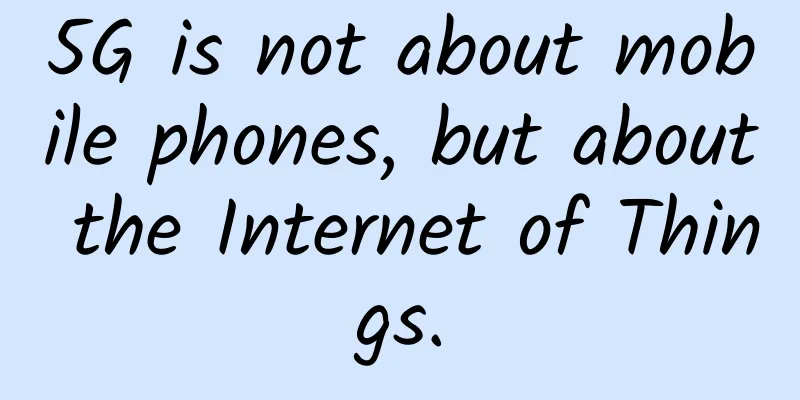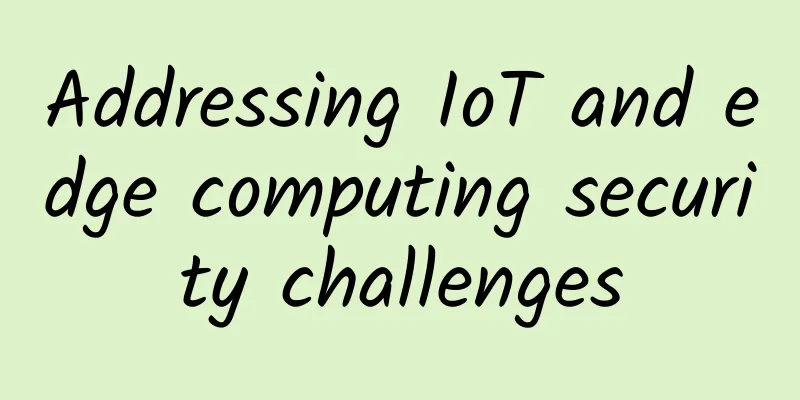5G is not about mobile phones, but about the Internet of Things.

|
Recently, new infrastructure has continued to cause heated discussions, especially with news that trillions of dollars of investment are on the way, setting off a wave of new infrastructure in the market, among which 5G construction ranks first. According to data from the Ministry of Industry and Information Technology, by the end of 2019, 130,000 5G base stations had been built in China. Riding on the momentum of new infrastructure, the construction of 5G base stations is in good shape. The three major operators all stated that their 5G investment in 2020 has increased several times, and it is expected that the number of 5G base stations will exceed 550,000 by the end of the year. In addition, as of February this year, the number of 5G package users in China (China Mobile + China Telecom) has reached 26.13 million, and China Unicom did not announce the number of 5G package users in its 2019 annual report and February operating data. In 2019, 13.769 million 5G mobile phones were shipped, and 7.845 million 5G mobile phones were shipped from January to February 2020, with a total of 21.614 million 5G mobile phones shipped in China. The domestic 5G mobile phone shipments are increasing significantly, and with the government's new infrastructure policy supporting 5G, the 5G mobile phone application market should be a flourishing one. Unfortunately, various novel and outstanding practical application scenarios have not yet appeared. Users of 5G mobile phones said, "Except for faster speed, there seems to be nothing special." This inevitably raises questions, what is the significance of 5G for mobile phones? Or, we can think of it this way: 5G is not intended to serve the consumer mobile phone market. After all, 4G can also meet most of the needs of 5G, and this is the current industry phenomenon. Fortunately, if the east is not bright, the west will be bright. 5G is completely different for the Internet of Things. It is a catalyst for the Internet of Things era and catalyzes the arrival of the Internet of Everything. 1. 5G catalyzes the arrival of the Internet of Things era 5G is the fifth generation of mobile communication technology, an extension of 4G technology, and the latest generation of cellular mobile communication technology. After all, it is a communication technology. From the perspective of communication distance, it can be compared to wide area network communication technologies such as NB-IOT and LORA. From the perspective of the layered thinking of the Internet of Things, 5G is just one of the communication technologies in the network layer. But why is it said that 5G has catalyzed the arrival of the Internet of Things era? Let’s first take a look at the three major network characteristics of 5G technology. First, high speed. The data transmission rate is much higher than the previous cellular network, up to 10Gbit/s, 100 times faster than the previous 4G LTE cellular network. Based on the existing mobile broadband business scenarios, the performance and experience are further improved, and applied to high-definition video live broadcast, VR/AR and other scenarios. This is the enhanced mobile broadband (eMBB) scenario of the three major 5G application scenarios, which mainly pursues the ultimate communication experience between people. Second, large capacity, providing the ability to connect hundreds of billions of devices. That is, in the massive machine type communication (mMTC) scenario, the connection capability between things is improved, while the network capacity and connection density are greatly increased, and the network connection between massive devices is pursued, making the Internet of Everything possible. Third, low latency, with network latency less than 1 millisecond, while 4G is 30-70 milliseconds. That is, in the ultra-high reliability and low latency communication (uRLLC) scenario, the ultra-low latency and ultra-high reliability characteristics are used to improve the communication capabilities between people and objects, and to promote applications with high requirements for latency and reliability in the fields of Internet of Vehicles and telemedicine. The picture comes from the "Indoor 5G Scenario White Paper" The main feature of the Internet is the information exchange between people, while the Internet of Things is the information exchange between people, things and people, that is, the Internet of Everything. The three major network characteristics of 5G network, high speed, large capacity and low latency, have derived three major application scenarios: eMBB, mMTC and uRLLC. The development requirements in different application scenarios are closely linked to the Internet of Things. The development of 5G has catalyzed the arrival of the Internet of Things era. In other words, 5G was born for the Internet of Things. So, what can we imagine about 5G in the era of the Internet of Things? 2. 5G Imagination in Internet of Vehicles 5G is one of the Internet of Things communication technologies, with three major characteristics: high speed, large capacity and low latency. Therefore, all imaginations based on 5G are inseparable from these three characteristics. There are many possibilities for 5G in the era of the Internet of Things. Smart healthcare, industrial Internet of Things, precision agriculture, etc. all have rich 5G applications. The editor believes that 5G applications in the Internet of Vehicles will be the most prominent one among them. Why do you say that? Because our lives are inseparable from transportation, traffic congestion is a global problem, and traffic safety is an important topic that the world pays attention to. Assuming that the Internet of Vehicles is fully utilized, both traffic congestion and traffic safety can be cured in the future. The concept of Internet of Vehicles originates from the Internet of Things, namely the Vehicle Internet of Things. It takes moving vehicles as information perception objects and uses the new generation of information and communication technology to realize the network connection between vehicles and X (i.e. vehicles, people, roads, and service platforms), so as to achieve intelligent management of traffic, intelligent decision-making of traffic information services, and intelligent control of vehicles. In short, to achieve smart transportation and smart driving, it is necessary to first build a high-quality Internet of Vehicles. The Internet of Vehicles mainly refers to the "three-network integration", that is, the integration of the in-vehicle network, the inter-vehicle network and the in-vehicle mobile Internet. When cars and cars, cars and people, cars and roads, and cars and service platforms form a common network, it means that the opportunity for cars to have powerful predictive and intelligent decision-making capabilities is greatly enhanced, which is crucial to solving traffic congestion and safety problems. At present, there are various demonstration projects of Internet of Vehicles in various places, such as the first city-level vehicle-road cooperative platform in Wuxi, Jiangsu, namely the Internet of Vehicles V2X-LTE demonstration project. The information and communication technology selected for this project is LTE technology (a transition between 3G and 4G technology). LTE information and communication technology can well meet the application of Internet of Vehicles projects, so is there any room for imagination for 5G? We can understand it this way: 5G is the technological catalyst for the Internet of Vehicles. High speed, extremely low latency, and large capacity are all the ignition points of the Internet of Vehicles. Imagine a car traveling at 60 kilometers per hour on the road. The distance it moves in one second is 17 meters. If it encounters a "ghost pop-up" phenomenon (i.e. pedestrians or vehicles suddenly appear on both sides of the road when the vehicle is traveling in a straight line), it will be a huge test for both ordinary cars and smart cars with driving assistance systems to be able to handle it safely. If the information exchange between cars becomes possible in the application scenario of the Internet of Vehicles, and a car driving in a straight line can sense objects such as cars or people on both sides of the road in advance, will the number of traffic accidents caused by "ghosts" be reduced? Obviously, yes. But what if the speed is increased? What if the speed is increased to 100 kilometers per hour, or even higher? At this time, to achieve true intelligent driving and reduce the rate of traffic accidents, it means that the network delay number must reach a very low standard, that is, the processing time of the vehicle in sensing the surrounding information must be reduced as much as possible. This coincides with 5G, whose network delay can be less than 1 millisecond, while 4G is 30-70 milliseconds. Secondly, with the development of the Internet of Vehicles, people, vehicles, roads and various devices are all terminal devices. The access of massive terminal devices to the network is a test for the network capacity. The same is true for the sensor data generated by various massive devices. However, the high speed and large capacity of 5G can meet these requirements very well. Traffic congestion, safety and other issues can be solved by the Internet of Vehicles, and the support of 5G will take the Internet of Vehicles' ability to solve traffic problems to a higher level. There is no doubt that 5G is currently the optimal solution for the selection of information and communication technology in the Internet of Vehicles, and the coordinated development of the Internet of Vehicles cannot ignore the data collection capabilities of the sensor layer and the data analysis and intelligent decision-making capabilities of the application layer, which are important components of the Internet of Vehicles. At present, the development of 5G is still in its early stages. We cannot accurately predict the development of the times, but we can boldly imagine it, and this is where our right brain comes in. 5G+Internet of Things is the general trend. What other imaginations can be behind the trend? It will be up to you to fill in. |
>>: 5G is gaining popularity, is artificial intelligence going to be "left out"?
Recommend
Within 60 days, a computer room caught fire and the four major cloud giants went offline. How can operations and maintenance avoid downtime?
The day before yesterday morning, Tencent's c...
VMISS VPS 20% off, Hong Kong/Korea/Japan/Los Angeles etc. starting from 21 yuan/month, CN2 GIA/9929/CMIN2 lines available
Canadian hosting provider VMISS currently offers ...
Ethernet cables: A billion-dollar market, but growth will be hampered
[[177568]] Allied Market Research forecasts that ...
edgeNAT VPS 30% off monthly payment, 40% off annual payment, deposit 500 and get 100 yuan, US/Hong Kong/Korea data center
edgeNAT has launched a promotion in February to w...
Cellular vs. WiFi: Which is Better for Your IoT Project?
As the name implies, Internet of Things (IoT) dev...
How Desktop Cloud Helps Application Innovation
Desktop cloud (also known as cloud desktop, deskt...
Riverbed is your smarter choice to accelerate your business with the power of digital experience management
[Original article from 51CTO.com] In the context ...
31 giants including Microsoft and Google form an alliance to prevent any company from dominating the 5G market
[[325080]] May 7 report: Foreign media said that ...
HostSlick: Netherlands high-security VPS from 5.99 euros/month, 1Gbps unlimited traffic, optional OpenVZ/KVM architecture
HostSlick is a foreign VPS service provider found...
The importance of 5G for manufacturing robots
The use of robots is often associated with the pu...
The key role of optical transceivers in passive optical network technology
Passive Optical Network (PON) technology has beco...
A curve shows what stage 5G, autonomous driving, and AI have reached
Recently, Gartner, a world-renowned IT market res...
Let’s talk about 6G development
As of now, the fifth generation (5G) mobile commu...
By 2028, the global 5G infrastructure market will reach US$80.5 billion
[[417378]] According to data released by market r...









![[Python Flask Practice] Get HTTP request data](/upload/images/67eb92666d44e.webp)